The New Goal for PBMs: Transparency
Traditional pharmacy benefit managers (PBMs) have come under fire for what some critics say is a lack of transparency. Opaqueness may be on the way out.
In a bid to provide greater disclosure, some large companies have sought alternatives such as forming alliances as a way to purchase prescription drugs, bypassing the traditional PBM model. Others have turned to PBMs where revenue is generated through a disclosed and fixed fee per member per month, or a per-claim administrative fee.
Pharmacy benefit administrators (PBAs), are also increasing in popularity. PBAs manage administrative services for the plan sponsor, including claims processing and data reporting.
Derek Daggett, Senior Sales Executive for San Francisco-based PBM SmithRx, told Drug Topics that he’s been seeing an increase in the number of transparent PBMs.
“Within the last five years, transparent PBMs have gone from being an outlier in the industry to now representing 40% of contracts,” he said. He added that the number of truly transparent contracts (meaning full disclosure of network contracts, no spread, and full pass through of rebates) is comparatively low.
Daggett pointed out that what’s driving the growth of transparent PBMs are plan sponsors who are tired of seeing their costs go up while they implement more restrictive formularies and clinical programs.
“Plan sponsors have shifted from paying no administrative fees to paying an administrative fee that allows them to see the true cost of the drug,” said Daggett. Having a truly transparent contract allows for better control of drugs on the formulary, and drives members to truly lower costs, thus leveling the playing field for all PBMs, he added.
Related article: CVS to Show Real-time Medication Costs
Because transparent PBMs are not focused on rebates and spread as a revenue model, they can help grow the independent pharmacy model to become a community health-care partner, Daggett said.
Doug Hoey, RPh, CEO of The National Community Pharmacists Association (NCPA) told Drug Topics that he is also seeing an increased recognition of PBMs that offer more transparent contract terms. But because the top-tier PBMs control the lion’s share of the marketplace, it is a challenge for small companies that emphasize transparency to get a larger foothold, he said.
“As more health plan sponsors and patients express concern over their spending, several things may happen. The big three may become more transparent, either voluntarily to appease more demanding health plan sponsors or as result of governmental intervention in the form of legislation and regulation,” said Hoey.
A truly transparent PBM would act more like a PBA, he added, and may charge a flat fee per prescription, but allow plan sponsors full access to all data. “That will increase the opportunity for more truly transparent PBMs like those that NCPA has identified that offer greater accountability.”
Express Scripts, the nation’s largest PBM, stated that drug manufacturers set drug prices and over the last eight years, those list prices have increased more than 200%.
If not for Express Scripts, its clients and patients would be left to pay those costs, a spokesperson for the company told Drug Topics. “We exist to bring those prices down to ensure patients can access drugs they need and that payers can afford them. We use every tool in our arsenal to do it, and are constantly innovating new ways to bring costs in line and create greater patient access.”
Related article: Why Every Pharmacist Should Care About the CVS/Aetna Deal
In 2016, Express Scripts limited the rise in drug prices to its clients to a 2.5% increase in unit cost in a year where brand drug price inflation was 11%. “We prioritize generic drug use, formulary management, step therapy, and tight management of retail networks to achieve savings.”
But traditional PBMs may be starting to respond to critics who call for more transparency. CVS Health recently announced that its PBM, CVS Caremark, would begin providing real-time visibility for member-specific medication costs and available lower-cost therapeutic options at the pharmacy. In a statement, the company said that the enhanced visibility to the patient’s benefit across all points of care can help eliminate possible dispensing delays, improve patient outcomes through increased medication adherence, and lower costs for members and payers.













